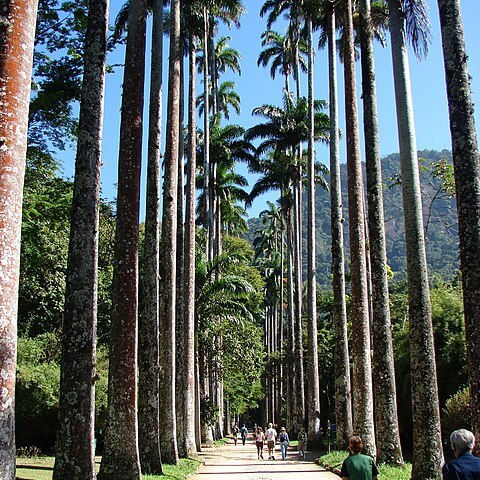To 40 m. and perhaps somewhat more in native forests, prominently bulged at base, usually more or less bulged also at the middle or above but in age becoming more uniform: leaves 3-7 m. long, 2 m. broad at middle, with 100 or more closely placed pinnae as much as 5 cm. broad, leaves with a flat look due to the simple arrangement of parts: spadix branches undulate or waved, at least when in cymba and after release: fruit oblong and usually somewhat curved, 15-20 mm. long, 9-10 mm. thick, purplish to black: note contrasts in key.

